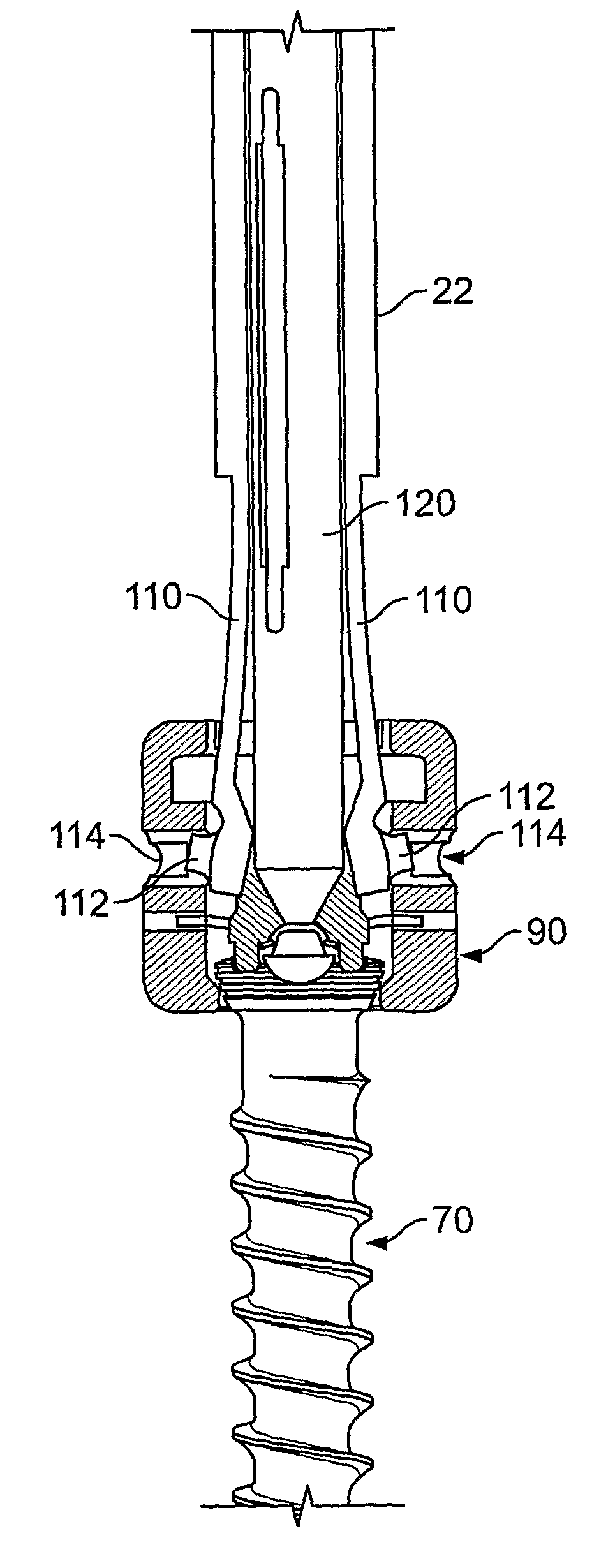Apparatus and method for implantation of surgical devices
a surgical device and apparatus technology, applied in the field of apparatus and methods for implanting surgical devices, can solve the problems of increasing the size or width of the coupling element, and causing damage to surrounding tissues, so as to avoid threaded connections, increase the effect of surgical devices, and increase the size of surgical devices
- Summary
- Abstract
- Description
- Claims
- Application Information
AI Technical Summary
Benefits of technology
Problems solved by technology
Method used
Image
Examples
Embodiment Construction
[0036]Referring initially to FIG. 1, a driving apparatus 10 is depicted for securing a fixation device 12 to a bone such as a vertebra. The implantation device 10 includes a proximal end portion 14 coupled with an operator handle (not shown) and a distal drive end portion 16 for being coupled with the fixation device 12.
[0037]The driving apparatus 10 includes a locking member 20 having a body 22 extending between the proximal end 14 and the distal end 16. The locking member 20 adjacent the proximal end 14 includes a non-circular end portion 24 for joining with the operator handle. For instance, the operator handle may include a socket (not shown) for receiving the end portion 24 so that rotation of the operator handle effects rotation of the locking member 20 and the implantation device 10.
[0038]The locking member body 22 is generally fixed with the drive end portion 16 of the apparatus 10 so that they are fixed for rotating together so that turning of the locking member 20 causes t...
PUM
 Login to View More
Login to View More Abstract
Description
Claims
Application Information
 Login to View More
Login to View More - R&D
- Intellectual Property
- Life Sciences
- Materials
- Tech Scout
- Unparalleled Data Quality
- Higher Quality Content
- 60% Fewer Hallucinations
Browse by: Latest US Patents, China's latest patents, Technical Efficacy Thesaurus, Application Domain, Technology Topic, Popular Technical Reports.
© 2025 PatSnap. All rights reserved.Legal|Privacy policy|Modern Slavery Act Transparency Statement|Sitemap|About US| Contact US: help@patsnap.com



